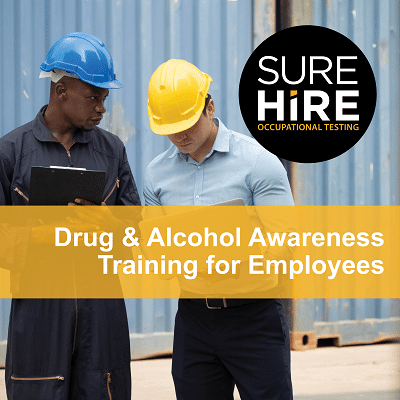TAKEAWAY: Workplace addiction is a real issue that can impact employees in several ways. It adversely affects workplace safety and productivity, proving costly for business owners. Fortunately, employers can use several tools, programs, and resources to help curb addiction in the workplace.
Many employers may not realize technology can help improve addiction among workers. Therefore, this article highlights the benefits of using technology for addiction and explores the options available to employers. Read on to discover the best tips for using technology to help with addiction treatment.
Jump Ahead
- What impact does addiction have on the workplace?
- What can employers do to improve addiction in the workplace?
- Benefits of using technology to improve addiction
- What type of technology is available for improving addiction?
- What specific technology is available for improving addiction?
- You May Also Be Interested In…
What impact does addiction have on the workplace?
According to Dr. Kelly, a professor in addiction medicine at Harvard Medical School, more than 70 percent of individuals with drug and alcohol problems continue to maintain employment because they remain “functioning.”
However, “functioning” employees affected by drugs or alcohol are costly to businesses. Decreased productivity, increased turnover, high absenteeism, increased workplace injuries, decreased morale, and reduced work quality are all potential consequences of addiction in the workplace that ultimately affect the company’s bottom line.
Addiction impacts individuals on a cognitive, emotional, and behavioural level and has far-reaching effects across organizations. The American Addiction Centers explains that alcohol and substance use disorders are prevalent in construction, mining, manufacturing, agriculture, and transportation, often among workers in safety-sensitive roles.
They also highlight concerning statistics around addiction in the workplace. For example, a national survey of the U.S. workforce found that 15 percent of employers admitted working while under the influence of alcohol, and three percent reported being under the influence of illicit drugs.
Luckily, employers can take several action steps to help curb addiction problems in the workplace.
What can employers do to improve addiction in the workplace?
Employers can ensure they have robust drug and alcohol policies to help address the problem of workplace addiction. Drug and alcohol testing and reasonable suspicion training are strategies that can form part of the plan to reduce and eliminate workplace addictions.

Book Impairment Awareness Training Today!
SureHire offers impairment awareness training to help supervisors and employees understand how to identify signs of drug abuse and when to carry out reasonable suspicion testing. We offer private sessions both virtually and in-person as well as self-study sessions through our online learning centre iNTELLECT.

Substance Abuse Professionals (SAPs) are also crucial to the equation. SAPs help employers by assessing workers with a disclosed substance abuse problem or those who tested positive on a drug or alcohol test. The assessment results enable the SAP to explain legal obligations to employers, help everyone chart a path forward, and highlight ways to accommodate a substance problem safely.
Employers can also tackle the root causes of addiction by addressing mental health and wellness in the workplace. Emotional Intelligence, also known as Emotional Quotient or EQ, is a vital piece of the puzzle when recovering from addictions. It consists of five essential areas in addiction recovery: self-awareness, self-regulation, motivation, empathy, and social skills.
SureHire uses EQ solutions to help companies identify early signs of mental health imbalances so they can offer support before any serious problems occur. Programs such as EQ at Work and EQ Resilience help employers monitor employee well-being and provide support as required.
Benefits of using technology to improve addiction
Digital technology has expanded the scope of addiction interventions and offers several benefits:
- It enables evidence-based treatments to reach a broad audience
- Tailored support is crucial in addiction intervention, and digital technology can achieve this via interactive responses and face-to-face support.
- It ensures timely treatment options so individuals can receive the help they need when needed, rather than waiting weeks or months for an in-person appointment.
- Digital technology is more cost-effective, making treatments available to more people.
For these reasons, digital technology is an essential consideration for employers seeking practical solutions for combating addiction. Several options are available so employers can choose the technology that will best meet their organization’s and its individuals’ needs.
What type of technology is available for improving addiction?
Digital technology for addiction is available in various formats. For example:
- Web-based self-help interventions
Web-based self-help interventions vary in features and offerings. Some are designed to inform and educate but do not provide therapy. Others go a step further and offer personalized feedback following an assessment.
Web-based self-help interventions can also include a human element, with support from peers or mental health professionals. Others consist of a step-by-step program the user can work through at their own pace.
- Online counselling and therapy
Online counselling involves communication with a therapist via an online channel, such as video calls. It enables one-to-one interaction that surpasses the distance barrier and eliminates travelling time. It may not be suitable for all types of addiction treatment or clients, but it will benefit many.
- Artificial intelligence (AI) and virtual reality (VR) software
AI is an emerging technology used in addiction treatment. Once limited to text only, the technology has evolved to voice communication and applications which can detect the user’s emotional needs.
Some technology uses gamification or virtual reality to help with addiction recovery. Certain games can help retrain the brain in those with addiction, whereas VR uses virtual avatars to navigate pathways to addiction recovery and participate in online forums.
What specific technology is available for improving addiction?
Employers and employees have a wide range of digital options for tackling workplace addictions. A few are as follows:
- SureHire’s EQ Resilience is an easy-to-use assessment tool that objectively measures an employee’s resilience. This technology identifies early signs of mental health imbalance and connects workers with the needed recovery strategies.
- SureHire’s EQ at Work tool assesses workers’ mental wellness and connects them with their needed support. It also ensures employers understand their organization’s wellness pulse and can make informed decisions for improving workplace wellbeing.
- The Therapeutic Education System (TES) is an interactive web-based intervention for substance use disorders. It focuses on the Community Reinforcement Approach, Contingency Management Behavior Therapy, and HIV Prevention. Research shows that TES has the potential to improve addiction treatment outcomes.
- The Addiction-Comprehensive Health Enhancement Support System (A-CHESS) is a smartphone app that can help support recovery from alcoholism. Other addiction recovery apps include Nomo, Sober Grid, and Pear reSET.
In conclusion, when chosen well, digital technology can help improve addiction among workers and form part of an overall plan for a safer and healthier workforce.

You May Also Be Interested In…
- Do You Have Reasonable Suspicion?
 Employers cannot initiate reasonable suspicion testing without first going through the 5-step process. Reasonable suspicion training provides critical information about how to initiate reasonable suspicion testing, including the 5-step process and other tools that employers can use to help manage the misuse of alcohol and drugs in the workplace.
Employers cannot initiate reasonable suspicion testing without first going through the 5-step process. Reasonable suspicion training provides critical information about how to initiate reasonable suspicion testing, including the 5-step process and other tools that employers can use to help manage the misuse of alcohol and drugs in the workplace. - An Employer’s Guide: What You and Your Employees Need to Know About DOT Drug & Alcohol Testing
 When implementing or maintaining DOT Drug & Alcohol testing, there are key areas that employers should consider.
When implementing or maintaining DOT Drug & Alcohol testing, there are key areas that employers should consider. - SureHire Occupational Testing Acquires COHR Health: A Positive Step Towards Safe, Healthy, Productive Workforces and Communities
 We are thrilled to announce that today, May 6, 2024, SureHire Occupational Testing has officially acquired COHR Health, a well-known leader in occupational health services. Read on…
We are thrilled to announce that today, May 6, 2024, SureHire Occupational Testing has officially acquired COHR Health, a well-known leader in occupational health services. Read on… - Occupational Testing Use Case – Mining
 In this case study, we will explore how mining companies can use various types of occupational tests to reduce Total Recordable Incident Rates (TRIR) long term.
In this case study, we will explore how mining companies can use various types of occupational tests to reduce Total Recordable Incident Rates (TRIR) long term. - 9 Strategies to Keep Workers Cool on Drilling Sites During Hot Summer Months
 This article delves into strategies to keep workers cool and safe on drilling sites during the hot summer months.
This article delves into strategies to keep workers cool and safe on drilling sites during the hot summer months. - Hearing Conservation Basics: How to Manage Occupational Noise
 Learn how to proactively mitigate occupational noise risks and help prevent NIHL among workers.
Learn how to proactively mitigate occupational noise risks and help prevent NIHL among workers.

